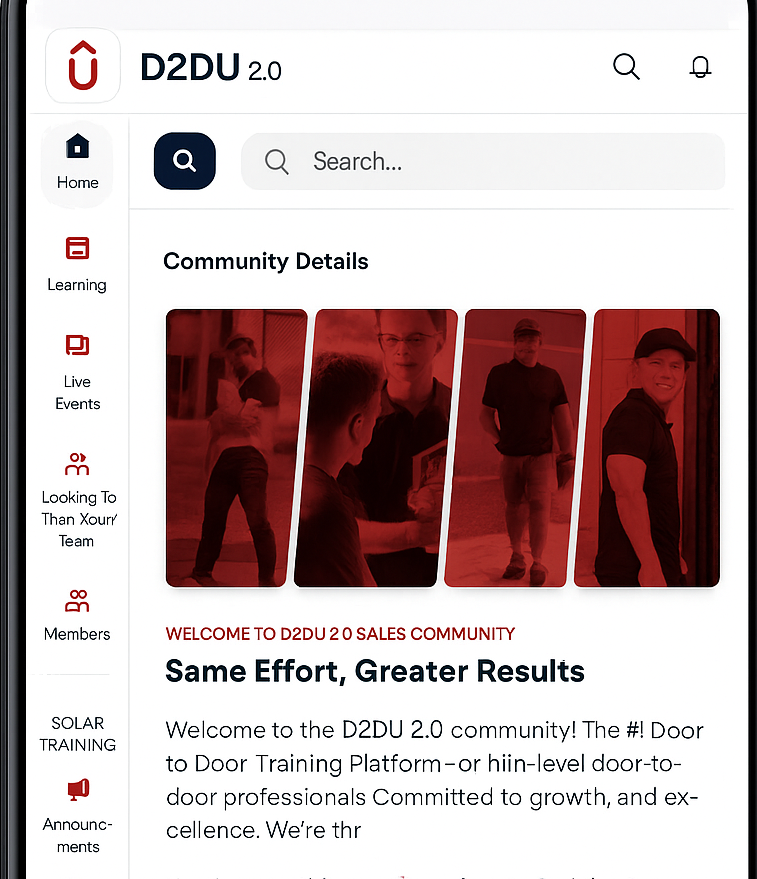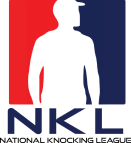416 alarm installs + 382 solar installs = 798 closed and installed deals in one year. That’s not just volume; it’s velocity.
Oscar’s outlier results weren’t a “work harder” fluke. They were a systems outcome built around one metric that most teams ignore: Days‑to‑Install (DTI)—the lag between “signed” and “installed.” Shrink DTI, and you shorten time‑to‑cash, raise close confidence, cut cancels, and multiply rep momentum.
At a glance
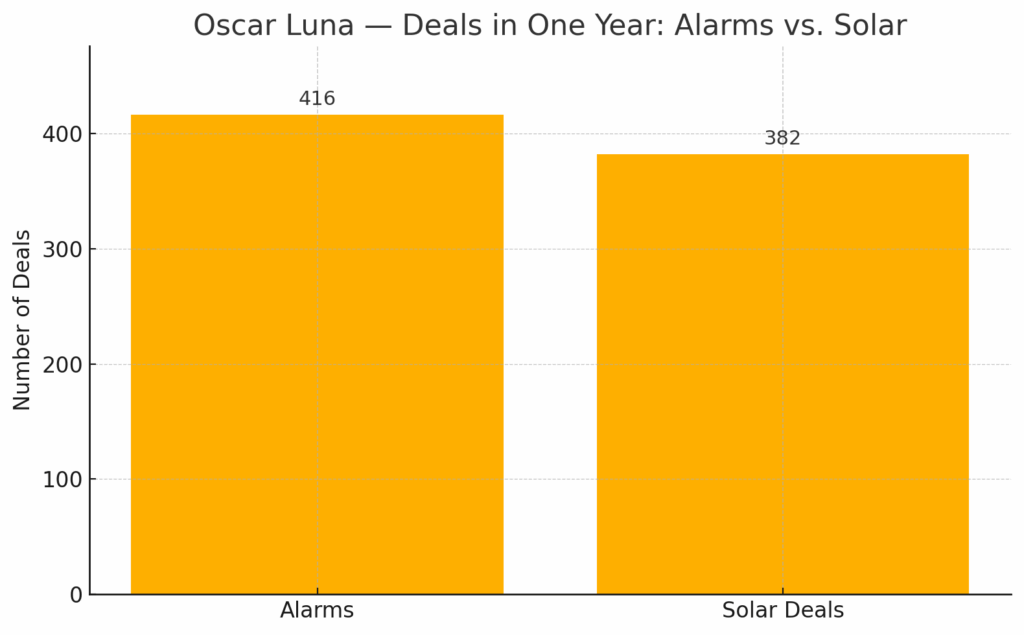
The Simple Equation Most Teams Miss
In Oscar’s world, speed is the strategy. While many orgs accept 30–60 days from sale to solar install, he engineered a fast lane:
- Legacy EPC average: ~45 days
- In‑house Texas average: ~14 days
- West Texas “fast track” installs: ~3–5 days (call it 4 for planning)
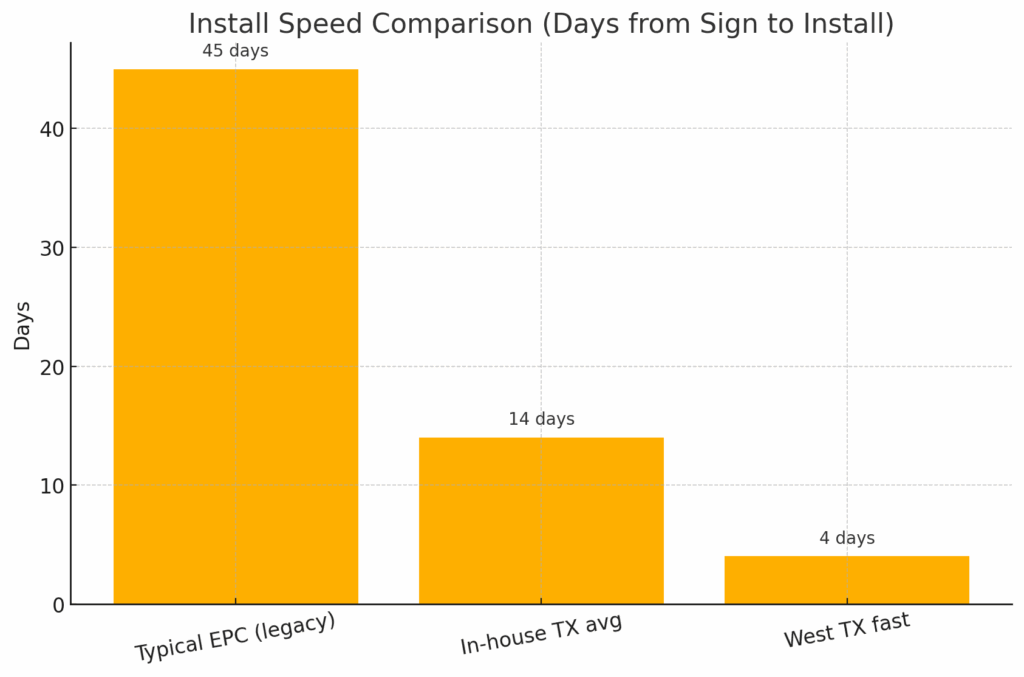
Why is this the profit lever? Because DTI controls the cash cycle and the confidence loop:
- Cash sooner → more turns per year. If your cash turns every 45 days, you get ~8.1 turns/year; at 14 days, ~26.1 turns/year.
- Confidence sooner → fewer cancels. Customers “feel” progress. Punch a hole in the roof (or mount a panel, or land a survey) quickly and cancels drop.
3. Momentum sooner → more doors. Reps sell more when installs happen fast. Wins stack. The calendar fills itself.
Oscar’s Blueprint for Shrinking DTI (and Multiplying Output)
Here are the operational and sales moves that powered Oscar’s 798‑install year. Treat this like a field‑tested playbook you can adapt—especially if you sell both alarms and solar.
1) Consolidate the install stack (own more of the chain)
- From outsourced EPC to “in‑house, inventory‑ready.”
Oscar’s team originally leaned on an EPC, then took over key steps: permitting, warehouse stocking, and install crews. This shaved weeks. - Always‑on inventory.
They carried several million dollars of panels, inverters, and BOS components to remove “we’re waiting on gear” delays. - Standardize jobs to standardize speed.
Templates for common roof types, electrical tie‑in patterns, and AHJ packages make your fastest install the default, not a lucky day.
Pro move: Track Permit Aging (days a permit sits unopened or incomplete), Crew Dispatch Lag (signed date → first on‑site action), and Punch List Closeout (inspection to PTO). Owners obsess over sales dashboards; top operators obsess over aging.
2) Use alarms to warm the solar close (and vice versa)
This is Oscar’s differentiator on the doors:
- Start with a simple alarm bundle. He opens with a straight, 10–15 minute, “less‑is‑more” alarm pitch (monthly, term, included gear).
- Assume close, keep moving. The tech is already “in the area,” which helps the homeowner visualize progress today.
- Then pivot to solar with a clean benefit bridge: “Because you’re an elite alarm customer, you also qualify for one year of alarm service covered when we bundle with solar.”
- Rolled‑in value that feels real now. Instead of “save $30,000 over 25 years,” Oscar uses a specific near‑term win (e.g., $1,000 promo spread to cover payments till July), plus a simple “bill‑today vs bill‑with‑solar” snapshot. Homeowners grasp now.
What to avoid: Death‑by‑detail. Don’t bury the homeowner in equipment SKUs or acronyms. Lead with the felt value (payments covered, faster first install step, inspection window pre‑booked).
3) Momentum math: stack 3–6 pitches per day
Oscar pairs speed ops with speed behavior. He never “sells alone”—he pairs with a rep at 5:00 PM daily to force a start and stack pitches. It’s a discipline loop:
Daily rhythm (example)
- 8:30 AM — Sales ops huddle (attack aging, fix blockers)
- Mid‑day — Quick 1:1s with closers (rebuttals, today’s targets)
- 3:00 PM — Personal prep (territory notes, warm doors list)
- 5:00 PM — Accountability meet‑up at a door (no “I’ll start later”)
- 5:00–8:30 PM — 3–6 live pitches (alarms → solar or solar → alarms)
- 8:30–9:00 PM — Quick log, tomorrow’s first three doors set
Why it works: pairing removes friction. You don’t negotiate with yourself; you just start. Once you get the first yes, it’s easier to keep rolling.
4) Offer design that sells the start, not the concept
Oscar’s offer construction is deliberately present‑tense:
- “Tech in the area” for alarms or “crew already on the block” for solar removes abstract waiting.
- Payment relief now (e.g., $1,000 promo spread over several months) beats a theoretical lifetime savings story.
- Tight install promise windows (“3–5 days” in West Texas when feasible) foster immediate buy‑in and lower re‑shopping.
Pro move: Show a simple, two‑column cost frame:
Today’s utility + alarm vs bundled solar + covered alarm year. Keep it on one sheet. Circle the first month that goes down.
5) Niche first, then scale
It’s tempting to chase every hot state, every incentive. Oscar didn’t. He focused:
- Texas first. He built a deep bench of AHJ knowledge and utility reps, and narrowed SKUs to run fast on common roof/electrical scenarios.
- Recruit to that niche. Crews and closers became specialists in TX codes and routes, which lowers changeover time and raises close confidence.
- Only then expand outward with your fastest install pattern in hand.
Master the Art of High-Volume Sales Like Oscar Luna
Unlock the Secrets to Selling 416 Alarms & 382 Solar Deals in One Year
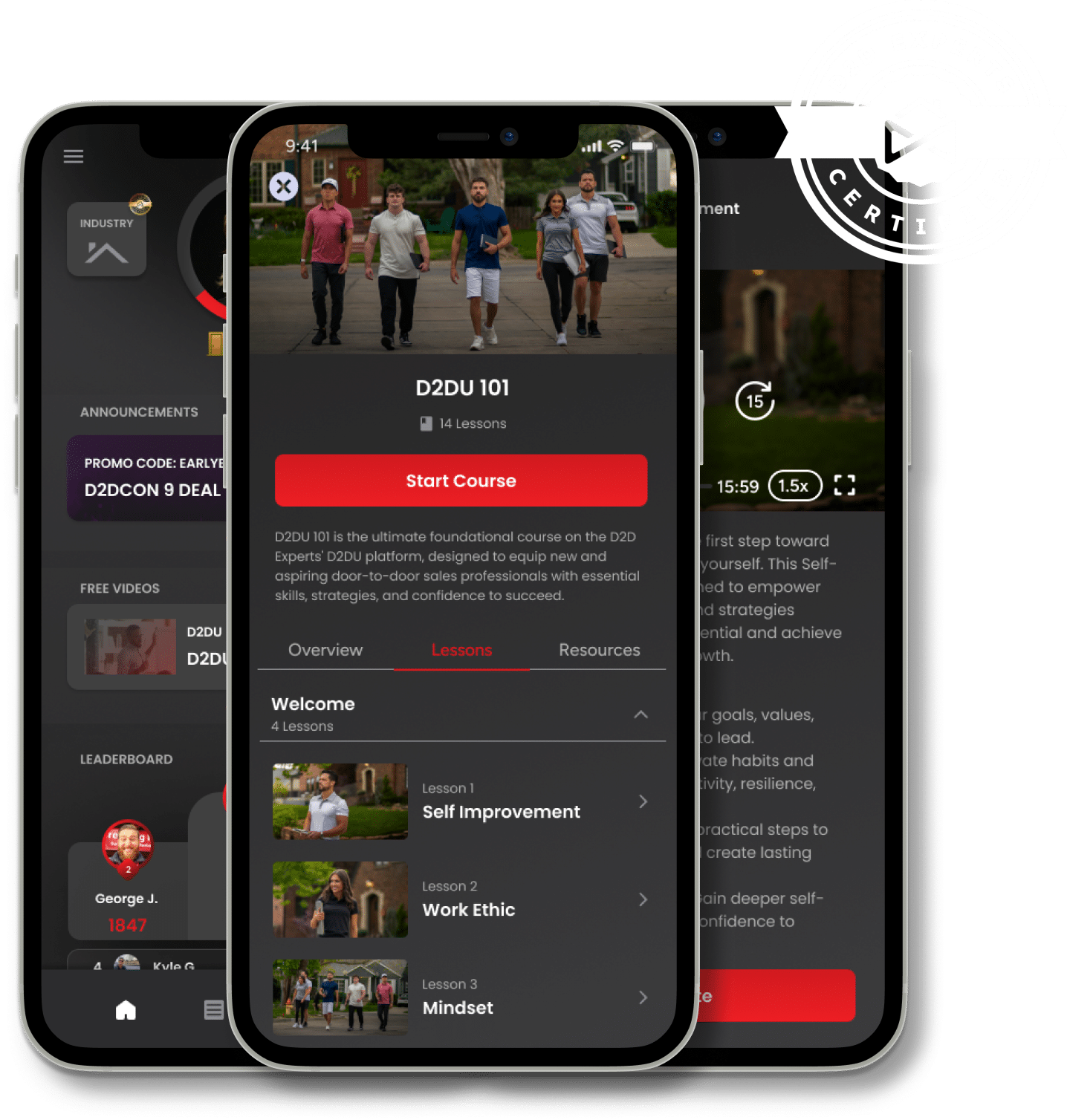
Field Scripts & Micro‑Frameworks You Can Steal
Below are tight, tested snippets you can plug into a pitch without derailing your flow.
A) Alarm‑first bridge to solar
“Since you’re getting the elite alarm bundle today, we can cover your first year of alarm service when we bundle with solar. That means your next several power bills are basically a wash while we get you installed and turned on. If that makes the numbers cleaner for you, we’ll keep it that simple.”
Why it works: It’s specific, near‑term, and frames solar as a payment smoothing move, not a 25‑year science lesson.
B) Solar‑first bridge to alarm
“To make the first months painless while we get the panels on, we cover your alarm year—and we’ll schedule your alarm tech today so you can see progress immediately. That’s how we keep folks from re‑shopping while they wait.”
Why it works: It connects “I see action now” with “I won’t rethink this,” which helps both closes stick.
C) Fast‑lane close language
“We run the fast track here. If the roof and main panel check out like I think, we’ll have a crew on‑site within a week. In this neighborhood, we average 3–5 days. If you prefer, we can lock your inspection window now while I’m here.”
Why it works: Credible speed claims reduce second thoughts and silently justify price.
Operational Scorecard: The Four DTI Drivers
If you want Oscar‑level speed, score these every week:
| Metric | Target | Why it matters |
|---|---|---|
| Permit Aging (days) | < 5 | Every day a permit sits is a day cash doesn’t turn. |
| First On‑Site Action (days from sign) | < 3 | A survey/tech visit “punctures” the waiting window; cancels drop. |
| Crew Dispatch Lag (days from permit) | < 2 | Keeps installs flowing; protects the calendar. |
| Punch List Closeout (days from inspection) | < 3 | Turns installs into PTOs/cash without end‑of‑month pileups. |
Coaching cue: Put this scoreboard in your morning stand‑up. Sell the team on beating aging, not just hitting “net signed.” Hitting speed targets is a sale.
Momentum, Money, and “The One More” Rule
Oscar’s big advantage wasn’t just the process; it was the habit attached to the process:
- Pair daily at 5:00 PM. Non‑negotiable door meet‑up.
- Sell for one more door after a win. Momentum beats mood.
- Reward installs, not just signatures. Recognition and contests pegged to installed deals keep behavior aimed at speed and quality.
Micro‑contest ideas that work:
- Fastest sign→survey time of week (must have homeowner selfie + timestamp)
- Fastest permit turnaround per AHJ team (ops leaderboard)
- Most “punch list cleared within 48 hours” by crew lead
- Bundles installed (alarm+solar) in the same week
“Days‑to‑Dollars”: Show Your Team the Math
It helps when closers and ops see the financial flywheel. Here’s the simple story you can tell at a meeting:
- Install lag controls turns. 45‑day lag ≈ 8.1 cash turns/year; 14‑day lag ≈ 26.1 turns/year.
- More turns, more volume with the same headcount. Speed lets you push more finished deals through without adding bloat.
- Confidence compounds. When customers see fast progress, CS calls go down, cancels drop, and referrals climb.
Owner tip: Put a laminated “DTI Ladder” in the bullpen—rungs at 45, 30, 21, 14, 10, with projected turns/year next to each rung. Every rung you drop is worth money.
Handling Cross‑Selling Without Chaos
Cross‑selling can hurt you if it slows the primary close. Oscar keeps the flows separate but adjacent:
- Alarm is a clean “yes.” Minimal steps. Tech is already rolling.
- Solar frames as a follow‑through, not a new project. The first action (survey, Shade report, inspection window) is scheduled on that same visit so it feels like the same workflow.
- One promise, one call‑to‑action. “We’ll have your alarm online today and your solar crew scheduled before I leave.”
Pro move: Track “Alarm→Solar attach rate,” but only after you track “Alarm install speed.” If your alarm speed dips when you push solar too early, you’re spreading attention too thin.
The Character Behind the Numbers
Oscar’s story is also a reminder that volume follows discipline:
- He still learns from rookies, borrowing lines that work.
- He lets process do the heavy lifting (5:00 PM meet‑ups, simple offers, fast first action).
- He invests in people and inventory before vanity metrics.
When you hear “416 alarms” and “382 solar installs,” it’s easy to think “superhuman.” What you’re actually seeing is a manager who removes time from the system, so his team has no choice but to win.
Quick Reference: Talking Points You Can Use Tonight
- “We run the fast track here.” (Anchor to real averages—14 days overall, 3–5 days in select TX neighborhoods.)
- “We cover your alarm year when we bundle.” (Solar → immediate benefit.)
- “We’ll schedule your first on‑site step before I leave.” (Survey, inspection window, or crew.)
- “We keep everything moving in‑house.” (No vague EPC delays.)
- “Let’s lock your inspection window now.” (Fewer unknowns.)
Objection snaps (keep it short):
- “We’re shopping.” → “Totally fair. Let’s get your site survey done now—no cost—so any quote you compare is apples to apples.”
- “We’ll wait for spring.” → “Most folks do, which is why installers are slammed then. Since crews are on your street this week, you get the faster lane—and you’re switched on when the sun’s strongest.”
- “I need to read more.” → “That’s smart. While you do, I’ll lock your first step; you can cancel if the numbers don’t hold.”
Implementation Checklist (print this for the war room)
- Choose your DTI targets by AHJ and neighborhood (45→30→21→14→10).
- Move one install step in‑house (start with survey/first‑on‑site).
- Stock fast‑moving SKUs; create roof/electrical templates.
- Add “first on‑site book” as a required step before the rep leaves.
- Pair reps daily at 5:00 PM; run a momentum leaderboard.
- Recognize installed outcomes weekly (not just net signed).
- Frame one near‑term benefit (e.g., a payment cushion) over lifetime abstract savings.
- Keep one page for “Alarm + Solar” bundle math—no tool sprawl.
- Publish the DTI Ladder wall poster (with turns/year on each rung).
Fewer “try again tomorrow” days
Quick bites, real scripts, instant answers (for free)
